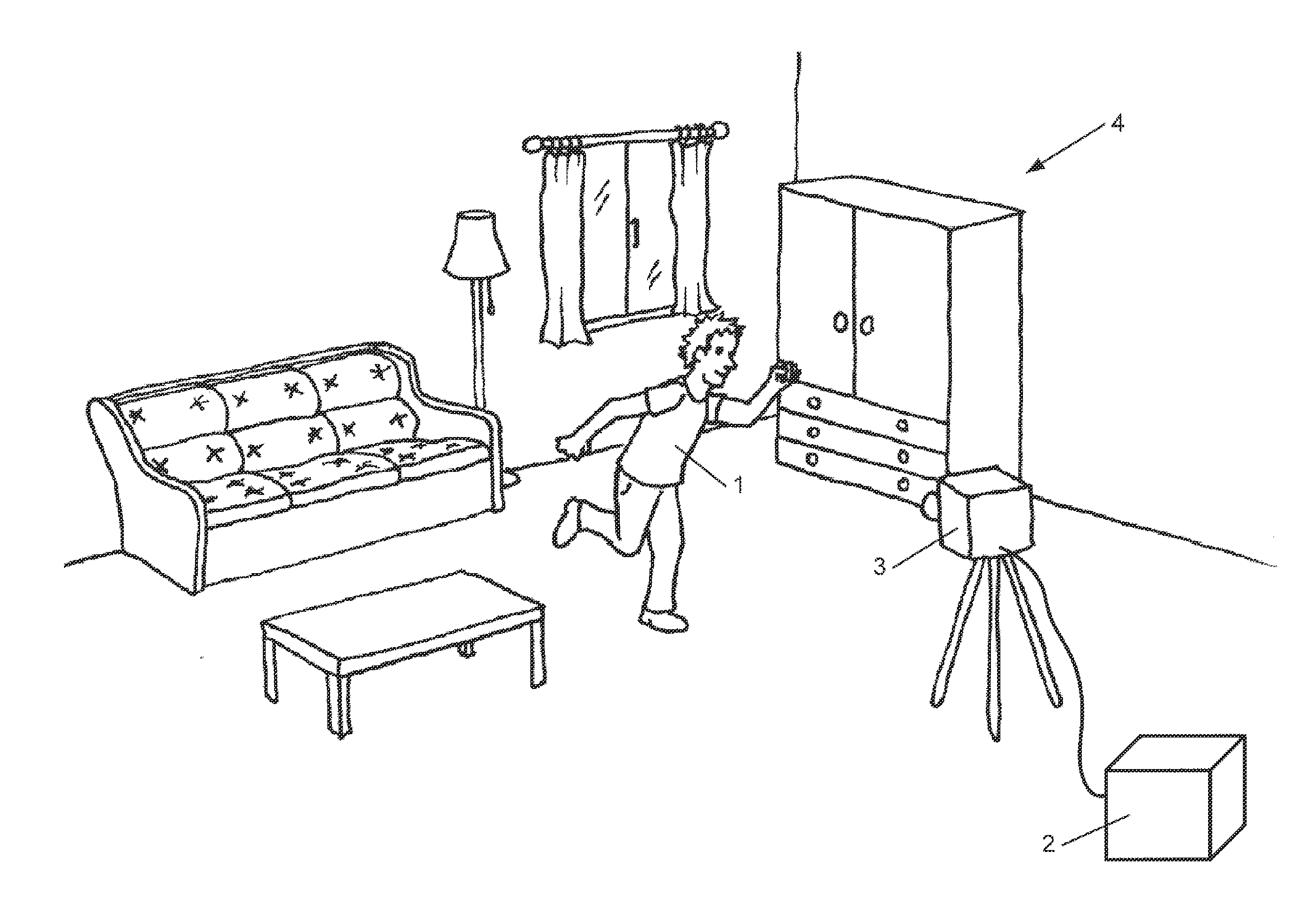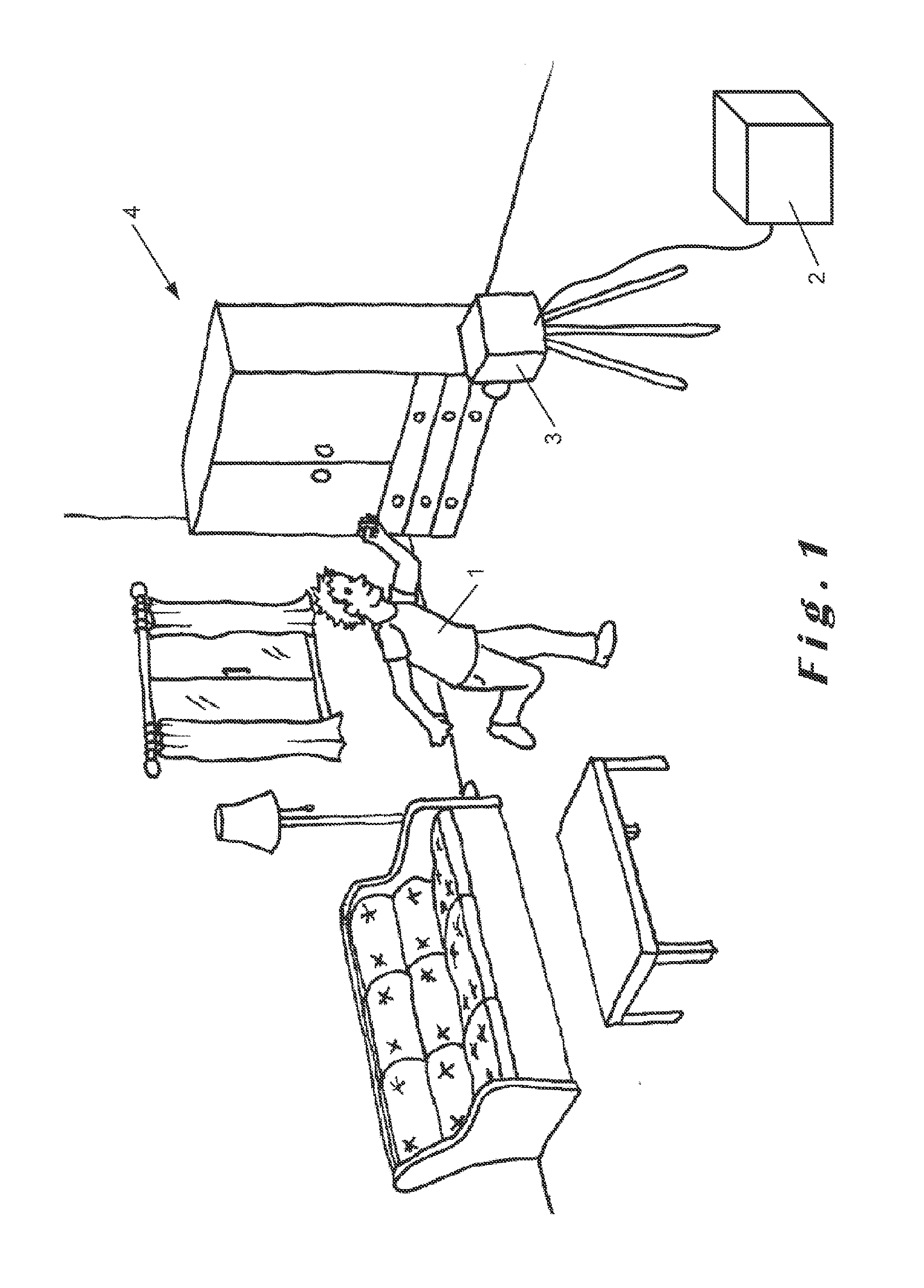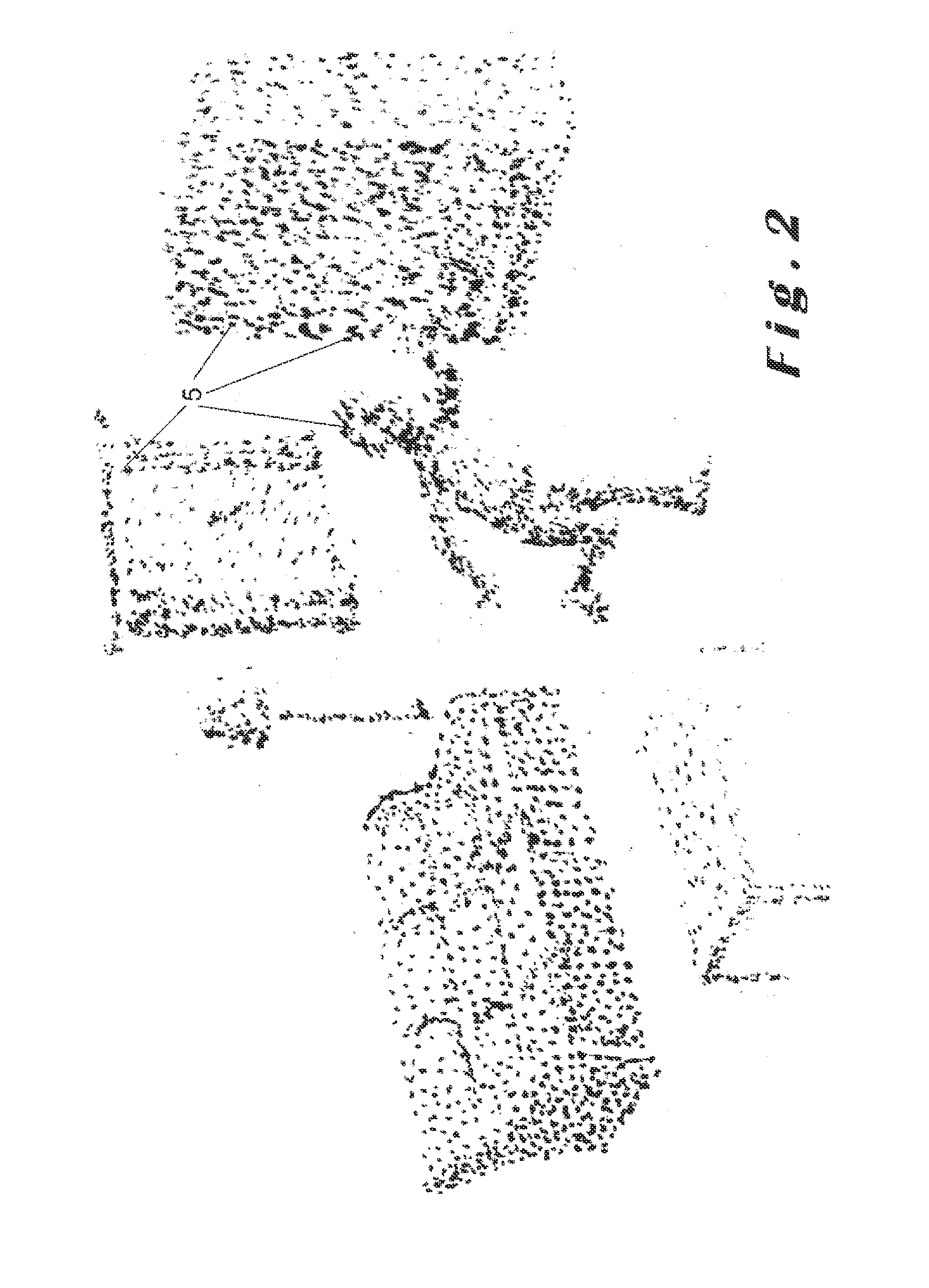Head recognition method
a recognition method and head technology, applied in the field of head recognition method, can solve the problems of many drawbacks of physical input devices, limited amount of different input signals, and inability to recognize heads, etc., and achieve the effect of reducing false positives and increasing the reliability of the method according to the invention
- Summary
- Abstract
- Description
- Claims
- Application Information
AI Technical Summary
Benefits of technology
Problems solved by technology
Method used
Image
Examples
first embodiment
[0064]In a first embodiment, the depth of the three-dimensional cloud of points 5 corresponding to the body of the user 1 is then averaged. This may be carried out in at least two alternative manners:
[0065]In the first alternative of this first embodiment, if a cluster of points 5 has been identified as corresponding to the body of the user, using for instance the method disclosed in International Patent Application WO 2008 / 128568 A1, the depth of the centroid of this cluster of points 5 will be considered as the average depth of the body of the user 1 in the image.
[0066]In the second alternative of this first embodiment, the depth of the points 5 representing the user 1 in the depth map (Indg) can be averaged. For example, the following equation may be used:
dav=∑i=1n∑j=1mIndg(i,j)·Ib(i,j)
wherein dav is the arithmetic mean depth, and n and m are the dimensions of the depth map image. Instead of an arithmetic mean, a different type of average, such as, for instance, the median, may b...
second embodiment
[0076]In a second embodiment, instead of calculating the dimensions a and b of the elliptical mask 7 on the basis of the average depth dav, the individual depth d(i,j) of each one of the pixels in the dilated contour image (Id) may instead be considered for the dimensions of the elliptical mask 7 to be applied for each individual pixel. This may be carried out, for example, using a dilated contour depth map (Ie)=(Id)·(Indg) and the equations:
a(i,j)=Fd(i,j)·Ab(i,j)=Fd(i,j)·B
[0077]In both embodiments, the final result is an accumulator array as depicted in FIG. 7, wherein the intensity peaks 8 are in the positions where the possibility of the occurrence of a human head in the source image is highest. However, due to the eventual presence of the extremities of the user 1 in the source image, resulting into nearly parallel lines in the contour image (Ic), FIG. 7 may also present, apart said intensity peaks 8, intensity ridges 9 (FIG. 8) corresponding to these extremities. In order to su...
PUM
 Login to View More
Login to View More Abstract
Description
Claims
Application Information
 Login to View More
Login to View More - R&D
- Intellectual Property
- Life Sciences
- Materials
- Tech Scout
- Unparalleled Data Quality
- Higher Quality Content
- 60% Fewer Hallucinations
Browse by: Latest US Patents, China's latest patents, Technical Efficacy Thesaurus, Application Domain, Technology Topic, Popular Technical Reports.
© 2025 PatSnap. All rights reserved.Legal|Privacy policy|Modern Slavery Act Transparency Statement|Sitemap|About US| Contact US: help@patsnap.com



